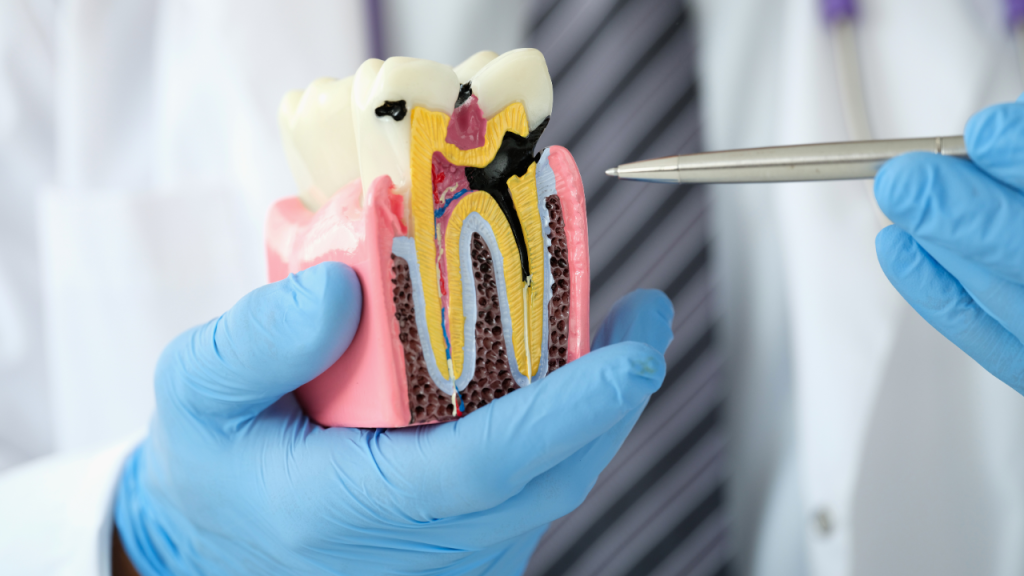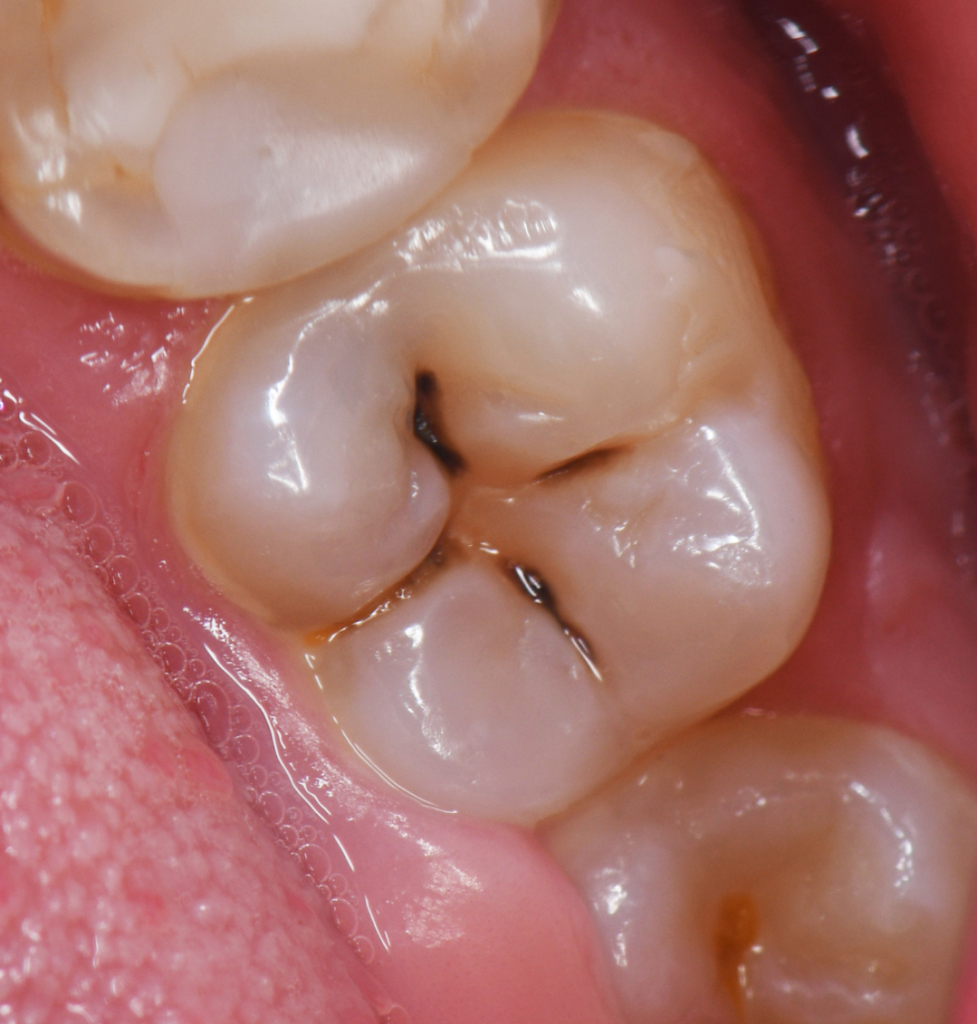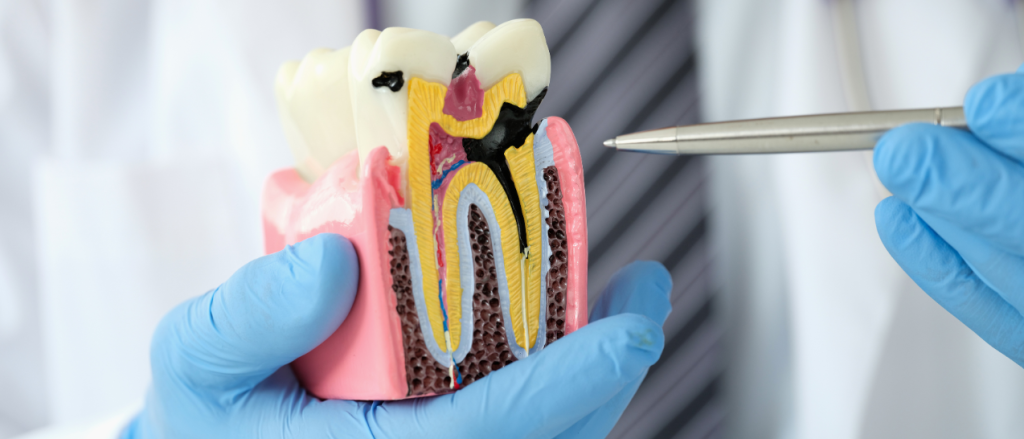No one likes to hear the word “cavity.” If you’ve ever had a cavity, you might be wondering: What exactly is a cavity, and what happens if I don’t get it treated?
Cavities are one of the most common dental problems, but they’re also one of the most misunderstood. Many people don’t realize they even have a cavity until it starts to hurt. Others wait until the problem becomes much more serious (and more expensive) to fix. In this post, we’ll break down what cavities are, how they form, and exactly what happens when they’re left untreated—using two real-life examples: one that was caught early and easily treated, and another that was ignored for years and turned into a much bigger issue.
First, What Is a Cavity and How Do Cavities Form?
A cavity is a small hole in your tooth caused by tooth decay. It forms when plaque, a sticky film of bacteria, builds up on your teeth. These bacteria feed on sugar and starches from your food and produce acid that eats away at the enamel (the hard outer layer of your teeth). When that acid exposure happens over and over without being cleaned away, the enamel breaks down, and a cavity forms. You may not feel it right away, but the damage is happening.
👉 Watch the video
Dr. Washington walks through two real-life examples—one caught early and treated with a simple filling, and one that went ignored for years and turned into a much more serious problem.
What Happens in the Early Stages?
In the video, Dr. Washington shows us an X-ray of a patient with a cavity that was spotted early. They weren’t feeling any pain yet, which is typical—early cavities often have no symptoms at all. Because it hadn’t reached the nerve yet, it could be treated with a simple filling. This stops the decay, restores the tooth, and prevents the need for more involved treatments down the line. It’s quick. It’s easy. And it saves you time, money, and discomfort. This is the best-case scenario. Cavities treated early are simple to fix, and they help preserve your natural tooth for the long run.
What Happens If You Don’t Treat a Cavity?
In the second part of the video, Dr. Washington shows an X-ray of a patient who ignored their cavity. What started as a small cavity progressed until the decay reached the inner nerve of the tooth. By the time this patient came in, a root canal (to remove the infected pulp) and a crown (to restore the tooth’s structure) were needed to save the tooth. That’s not just a bigger procedure—it’s also significantly more expensive and time-consuming.
How Quickly Can Cavities Get Worse?
That depends on several factors—your oral hygiene, diet, genetics, and how regularly you see your dentist. But the takeaway is clear: cavities don’t stay the same. They either get treated or they get worse. Decay spreads from the enamel to the softer dentin underneath, and eventually into the nerve (pulp). The longer you wait, the more extensive and expensive the treatment becomes.

Stages of a Cavity:
Here’s what can happen when decay is left untreated:
- Stage 1: Early Cavity
- The decay is limited to the enamel.
- Treatment: A simple filling to remove the decay and seal the tooth.
- Cost and time: Minimal.
- Stage 2: Deeper Decay
- The decay spreads into the softer dentin layer under the enamel.
- You may start to feel sensitivity or mild pain.
- Treatment: A larger filling or possibly a crown.
- Stage 3: Infection
- The decay reaches the pulp (nerve) of the tooth.
- Pain can be severe.
- Treatment: A root canal to remove infected tissue, plus a crown to restore the tooth.
- Stage 4: Abscess and Tooth Loss
- Infection can spread beyond the tooth, causing swelling and serious health risks.
- Treatment: In some cases, the tooth must be removed.
Why Early Detection Matters
Dr. Washington’s real patient examples show just how fast cavities can worsen without symptoms. You might not feel pain right away, but decay doesn’t stop just because it’s quiet. Regular checkups help catch cavities early—before they spiral into bigger issues. Routine dental checkups are the best way to find cavities before they become painful and expensive.
Regular exams and cleanings help:
- Detect early decay while it’s still easy to treat
- Prevent infection and tooth loss
- Save you money by avoiding more complex procedures later

Don’t Wait Until It Hurts
Cavities are progressive. They don’t go away on their own. But the good news is they’re entirely treatable, especially when caught early. The longer you wait, the more likely you’ll need involved treatment. So if it’s been a while since your last checkup, don’t wait for pain to be your signal. The best time to catch a cavity is before you feel it.
Ready to schedule your appointment? Give us a call at 202-831-7262 or schedule your visit online. Your teeth will thank you.


